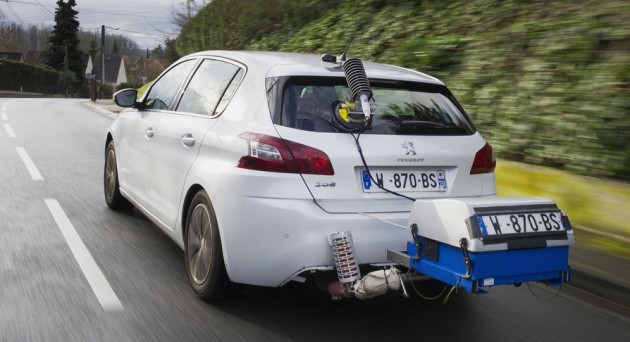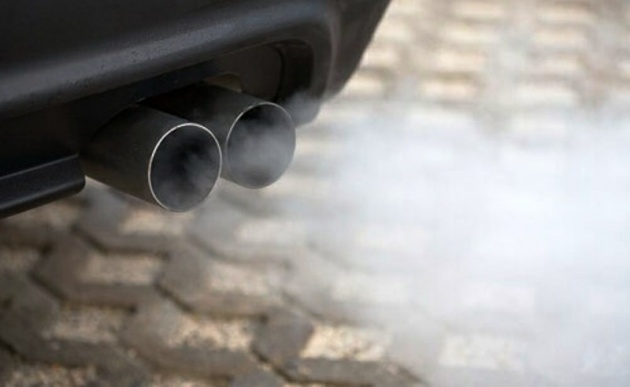The European Automobile Manufacturers Association (ACEA) says that proposals recently made by the European Union for Euro 7 emissions regulations – which are due to come into effect in 2025 – could make vehicles powered by internal combustion engines unviable by 2026, a full four years before new ICE vehicle sales are outlawed in the United Kingdom, according to an Autocar report.
The first substantial proposals for the Euro 7 regulations were made in October 2020 by the European Commission’s Consortium for Ultra Low Vehicle Emissions (Clove) comprised of engineering consultants, according to the magazine.
“The ACEA believes that the emission limit scenarios presented by Clove, coupled with the suggested new testing conditions, would in practice result in a situation very similar to a ban of vehicles powered by an internal combustion engine, including hybrid electric vehicles,” the ACEA said last December.
This has far-reaching implications for internal combustion engine-powered vehicles in the region. The more stringent proposals for Euro 7 put forth by Clove, if implemented, could potentially make many smaller, more affordable ICE cars economically unviable for production.
High-performance models could also be under serious threat, due to the need for emissions to be as low as possible, even under hard acceleration. As a result, all heavy-load driving scenarios such as when towing a caravan or heavily laden trailer could be difficult with a Euro 7 emissions-compliant vehicle, Autocar noted.
Proposals put forth by Clove suggest that future internal combustion engine-powered vehicles could be fitted with a multi-stage “supercatalyst” setup, according to Autocar. This setup would be comprised of a heated electric catalyst, a pair of 1.0 litre conventional three-way catalysts, a 2.0 litre particulate filter and an ammonia slip catalyst, the magazine wrote.
Clove claims this is a big step towards zero-impact after-treatment of exhaust emissions, however the ACEA argues that mandating the use of such a large, expensive component would be close to impossible in a small car and be very difficult to integrate into many existing vehicle architectures, and the added complexity will drive showroom prices up, the manufacturers’ association added.
Another proposal for Euro 7-compliant cars is for them to be installed with a sophisticated and costly onboard diagnostics system for monitoring the vehicle’s engine to ensure that it remains compliant to the upcoming emissions standards for 240,000 km, Autocar wrote.
Some car industry insiders also believe that the proposals are for an underlying aim to push motorists in the European Union into electric vehicles by making ICE-powered cars much more expensive or unable to meet emissions requirements, as well as to also push the heavy goods vehicle market towards electric drive, the magazine added.
There are two possible emissions requirements suggested by the Clove proposal, the more extreme of the two mandating numbers which are even lower than those from vehicles compliant with the latest Euro 6d and Real Driving Emissions (RDE) standards, wrote Autocar. By Clove’s own calculations, emissions from Euro 6d-compliant vehicles are well under RDE limits in normal driving conditions, it said.
Clove aims for the limits for all pollutants – including nitric oxide, carbon monoxide, particulate matter, ammonia, methane and nitrogen dioxide – from Euro 7-compliant vehicles to be the lowest in the world, and the new emissions limits are proposed to be applicable in all driving scenarios, including driving immediately after a cold start, in stop-start traffic, hard acceleration, driving uphill and when towing a trailer.
The opposition from the ACEA is based on the Clove proposal to cut internal combustion-engined vehicles’ emissions in all scenarios, with the manufacturers association arguing that the proposal would mean “vehicles being tested in a completely unrepresentative way that would combine all the worst cases,” such as going uphill at high altitude under low ambient temperature with aggressive driving, the magazine wrote.
The ACEA has stated its opposition to the proposed new limits, the association arguing that the portable emissions measurement systems (PEMS) attached to cars for real-world testing would face great difficulty acquiring accurate measurements; for this, the PEMS would need to render readings that are even more accurate that those from laboratory tests, the association said.
Meanwhile, Clove member Jon Andersson, who is global technical expert, emissions measurement and standards at engineering consultancy Ricardo told Autocar that the matter of emissions measurements is under review. “On the PEMS side, I think it’s reasonable to say that final Euro 7 limits would be set after considering the capabilities of the measurement systems and not independently,” Andersson said.
The ACEA remains unconvinced of the super-catalysts’ feasibility, Autocar noted. “Technical solutions designed to meet, or intended to meet, the proposed extremely low limit values for NOx, combined with very stringent limitations of NO2 and NH3 [ammonia], will be very costly and massively complicated,” the association said.
The post New proposals for Euro 7 emissions regulations could make internal combustion engines unviable by 2026 appeared first on Paul Tan's Automotive News.





0 Comments